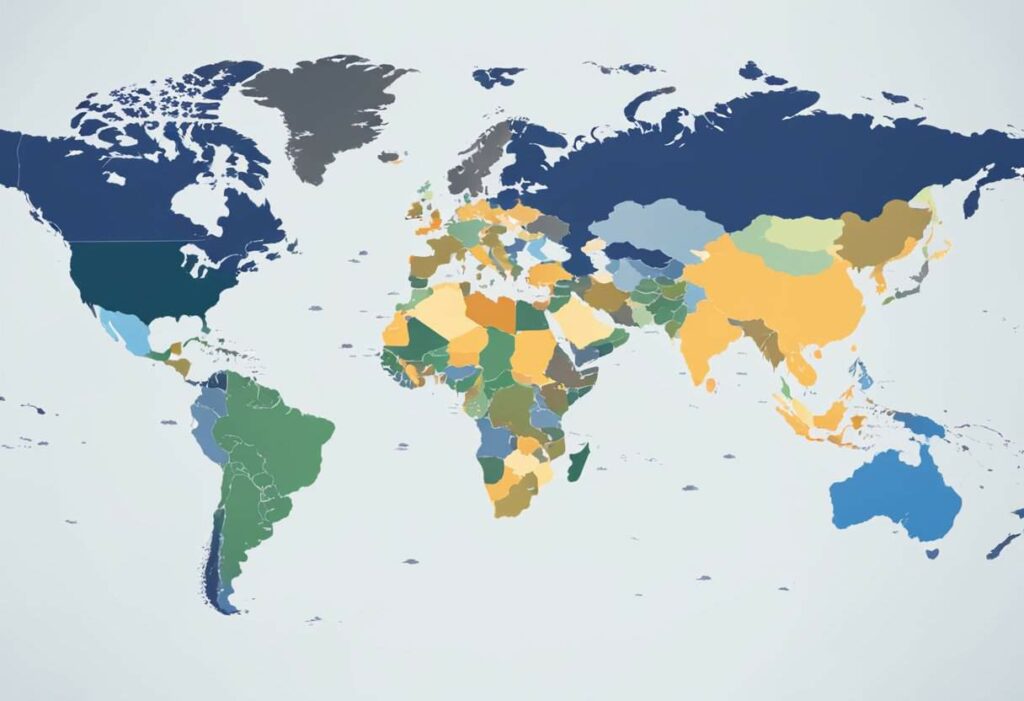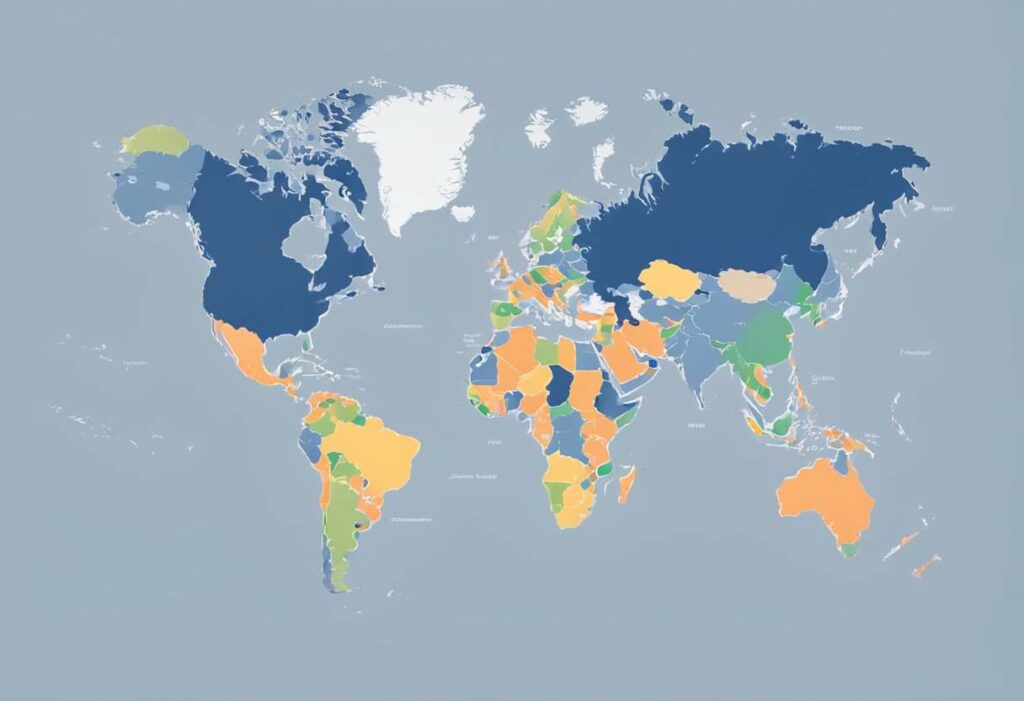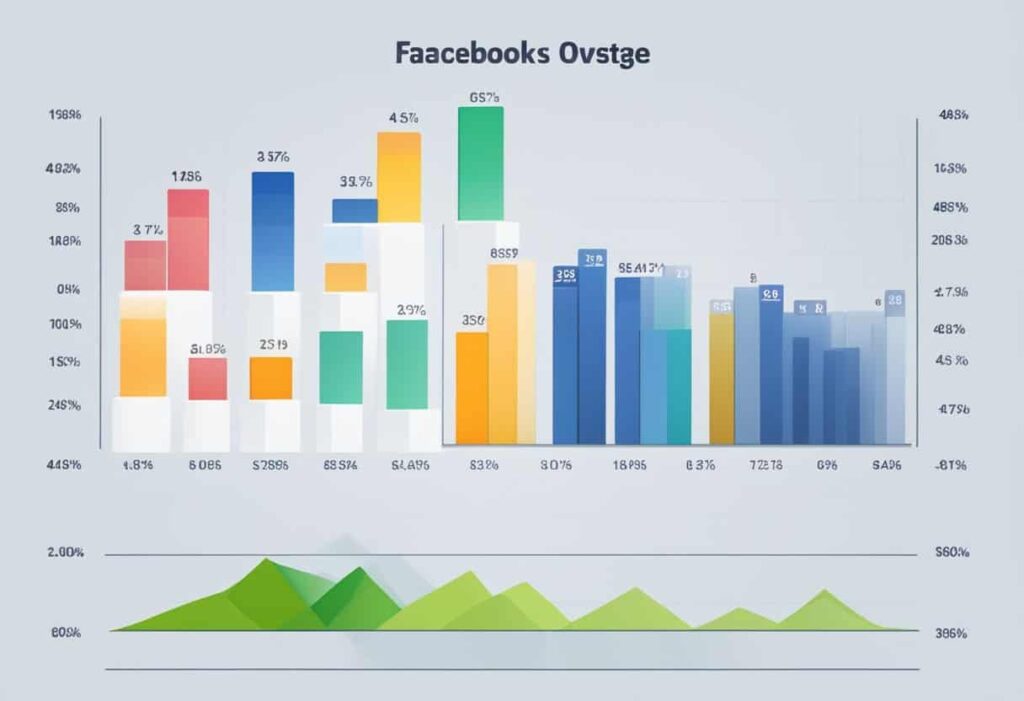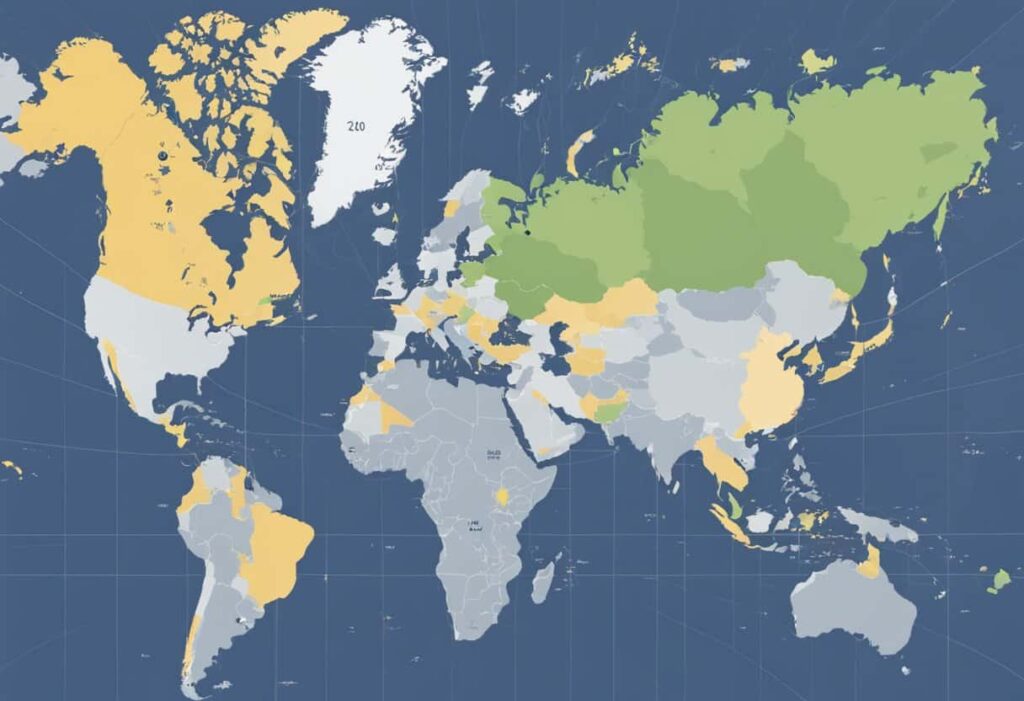As a global platform that connects billions of users, Facebook’s usage statistics vary significantly by country. These metrics provide valuable insights into how different populations engage with the world’s largest social media network. Understanding the demographics, behavior patterns, and reasons behind the platform’s use helps businesses, policymakers, and researchers grasp the digital landscape’s intricacies. It also sheds light on the societal impact that a social media platform can have across diverse cultures and geographic zones.

Investigating the financial overview of Facebook, now a part of Meta, reveals much about its growth trajectory and the evolving priorities within the company. Moreover, the services and products offered by Facebook are continually adapting, driven by user demand and technological advancement. The platform’s role in advertising and its impact on business also speak volumes about its influence on global commerce. All this occurs while Facebook navigates a competitive landscape, faces various challenges, and confronts controversies that shape its policies and practices.
Key Takeaways
- Facebook’s user base demonstrates varied engagement across different countries, providing insights into global digital behaviors.
- The platform’s financial growth and product evolution reflect its adaptive strategies in a dynamic tech landscape.
- As a major player in digital advertising, Facebook influences global business trends, while navigating a complex array of challenges.
Global Facebook User Demographics

When you consider the distribution of Facebook users worldwide, it’s important to recognize the significant regional and demographic differences that exist. The breakdown by region reflects varying degrees of market penetration, while age and gender distribution provides insight into the platform’s appeal across different demographics.
Users by Region
North America: In North America, Facebook’s market penetration is among the highest in the world, with a significant percentage of the population registered as monthly active users.
- United States: The country shows high engagement rates, with millions logging onto the platform each month.
Asia-Pacific: The Asia-Pacific region boasts the largest number of Facebook users, attributing to the platform’s substantial expansion efforts. Key countries with substantial user bases include:
- India: Representing a significant share of Facebook’s user base, with a rapidly growing number of individuals accessing the platform each month.
- Indonesia: This country also accounts for a large portion of Facebook users in the region.
South America: In South America, Facebook sees a wide user base with:
- Brazil: Standing out with a large number of monthly active users engaging with the platform.
Africa: Facebook’s presence in Africa continues to grow, although it varies widely by country.
- Notably, countries across Africa are experiencing an increase in the number of individuals joining and actively using the platform.
China: While Facebook’s availability in China is restricted due to internet regulations, it is worth mentioning due to its potential as a large market if circumstances change.
Age and Gender Distribution
Facebook’s global user base showcases a diverse age range with certain age groups showing more affinity towards the platform:
- Young adults, particularly those aged 18-34, are highly active on Facebook, indicating their preference for established social media networks.
- Older age groups are not to be overlooked, as there is a growing number of users aged 35 and above who are joining Facebook.
In terms of gender distribution, Facebook generally has a balanced mix of male and female users, though variations might occur on a regional level. Data suggests that:
- Men often represent a slightly higher percentage of Facebook users in many regions.
- The platform continues to engage women effectively, keeping the gender ratio relatively even globally.
Usage Patterns

As you explore global trends in digital behavior, you’ll notice distinct patterns in Facebook usage based on daily and monthly activity, as well as the time users spend on the platform. These metrics are crucial to understanding Facebook’s impact and reach across different demographics.
Daily and Monthly Active Users
Facebook’s user engagement can be measured by examining the number of daily active users (DAU) and monthly active users (MAU). On a daily basis, millions of users log into Facebook via various devices, with a significant portion accessing it on their mobile phones. This trend is particularly prominent among younger users, who often favor the convenience of mobile devices over traditional desktop access. The table below offers a comparative look across different countries:
| Country | Daily Active Users (in millions) | Monthly Active Users (in millions) |
|---|---|---|
| United States | 120 | 190 |
| India | 150 | 280 |
| Brazil | 60 | 100 |
(Numbers are for illustrative purposes only)
Time Spent on Facebook
Your usage data wouldn’t be complete without considering the time spent on Facebook. The average user spends approximately 35 minutes per day on Facebook, contributing to its status as a dominant force in media usage among internet users. The duration tends to vary by country and demographic, with younger populations often logging more time on the platform. The trend also highlights the platform’s success in keeping users engaged, not just in terms of frequent logins but prolonged interaction as well.
Facebook’s Financial Overview

In this section, you’ll find a detailed breakdown of Facebook’s financial performance, focusing on Revenue and Net Income as well as the immense contribution of Advertising Revenue to the company’s financial health.
Revenue and Net Income
Facebook’s revenue streams are diverse, but they largely converge on the digital platform’s expansive user base. Your understanding of Facebook’s financial success begins with its annual revenue, which has shown consistent growth, driven by increasing ad spend across the globe. For instance, in their financial reporting, Facebook has disclosed billions in annual revenue, which is a testament to their broad market penetration and the efficacy of their targeted advertising strategies. Alongside revenue, the net income provides insight into the profitability of the company, reflecting cost control measures and operational efficiency.
Advertising Revenue
Substantial revenue generation for Facebook comes from advertising. Constituting the bulk of the platform’s income, advertising revenue is linked directly to user engagement metrics and the effectiveness of ad delivery. The advertising model of the platform allows for the leveraging of extensive user data to target ads, optimizing the average revenue per user (ARPU). Data trends show that as Facebook innovates with ad formats and targeting tools, advertisers continue to allocate more of their ad spend to reach their desired audience on Facebook, resulting in a robust growth in advertising revenue year-over-year.
By tracking these financial indices, you gain a comprehensive picture of Facebook’s financial health and its operational focus.
Facebook Products and Services

As part of its portfolio, Facebook has expanded beyond the traditional social networking platform to include various products and services that keep you connected. From visual storytelling on Instagram to real-time messaging on Messenger and the exploration of virtual reality through Oculus, these services are designed to facilitate communication and offer immersive experiences.
Instagram and WhatsApp
Instagram: A platform renowned for photo-sharing, it has evolved to include features like Stories, Reels for short-form videos, and IGTV for longer content. Instagram allows for direct messaging and has become a hub for influencers and brands looking to engage with their audiences.
WhatsApp: Acquired by Facebook, WhatsApp is a messaging app that supports text, voice, and video communication. It’s known for end-to-end encryption and is widely used for personal and business communication across multiple countries.
Messenger and Oculus
Messenger: Originally a part of Facebook’s main app, Messenger has become a standalone service for personal and group messaging. It includes various features like voice and video calls, interactive games, and business interactions through chatbots.
Oculus: A leap into virtual reality (VR), Oculus offers a range of headsets and equipment for VR gaming and experiences. It’s paving the way for immersive social interactions and new forms of content consumption beyond traditional screens.
Advertising and Business Impact

In today’s digital climate, Facebook has carved out a substantial niche in advertising, with the platform’s vast user base making it fertile ground for targeting specific audiences and measuring the return on investment for businesses.
Audience Targeting
Your ability to reach the right customer hinges greatly on audience targeting. Facebook’s rich reserves of user data enable advertisers to pinpoint prospects by demographics, interests, behaviors, and more. Studies show that cross-cultural analysis is instrumental in driving ad engagement, emphasizing the importance of tailoring your message to the cultural specifics of each audience. By employing sharp targeting methods, advertisers can expect to enhance their reach and improve the relevance of their ads to different user segments.
Brand Engagement and ROI
Understanding the dynamics of brand engagement can lead to an impressive return on investment (ROI). Your brand’s presence on Facebook is not merely about visibility; it hinges on how well users interact with your content. The efficacy of Facebook ads in cultivating customer attitudes and engagement significantly affects businesses, as seen in the study of gender’s moderating role on interaction with ads. Furthermore, analyzing the user engagement through large-scale data has provided insights into gender inequality, shaping how brands communicate with their audience. These tailored communications directly influence the engagement rate and subsequent ROI, showcasing the power of informed and focused advertising on the platform.
Competitive Landscape

In this section, you will explore the dynamic environment of social media, focusing on the competitive interactions between various platforms. Social networks are not static; they continuously evolve, impacting the user base and market dynamics.
Competing Social Media Platforms
While Facebook maintains a strong user base globally, it faces substantial competition from other platforms, particularly TikTok. TikTok’s rise as a social networking phenomenon, especially among younger demographics, has altered the competitive balance. With its mobile-first approach and a focus on short-form video content, TikTok has attracted users rapidly, challenging the dominance of established players. Moreover, consistent innovation in social networking services by these mobile apps leads to a fluid and ever-changing social media landscape.
Emergence of New Competitors
New competitors entering the social media space typically offer fresh engagement experiences or unique value propositions to attract users. For instance, emerging platforms may leverage advances in technology to offer enhanced interactivity, such as augmented reality (AR), or tap into niche communities. The entrance of these new competitors has the potential to disrupt the market share of existing platforms by capturing specific segments of the population that seek novel social networking experiences.
Your understanding of the competitive landscape is crucial as it indicates shifting preferences and the importance of innovation in sustaining user engagement across social networks.
Challenges and Controversies
As you delve into Facebook’s usage statistics by country, you’ll encounter the complexities of Data Privacy and Security as well as the pervasive issues of Misinformation and Censorship that impact the platform’s global user base.

Data Privacy and Security
Your personal information is at the heart of data privacy concerns on Facebook. Ingenuity is required to safeguard such sensitive details. Rigorous analysis of gender inequality in the advertising data on Facebook highlights these privacy matters, showing users’ demographics are at risk without proper controls. There’s a comprehensive study entailing large-scale data that casts a shadow on the security measures safeguarding age and gender information.
Meanwhile, the integrity of your data can be compromised when security measures falter. For example, as Facebook’s daily active users approach numbers larger than the population of most countries, the enormity of potential security breaches becomes apparent, revealing challenges in safeguarding the data of millions.
Misinformation and Censorship
You are also subjected to misinformation which can significantly distort your understanding of social and political realities. Facebook’s algorithms can inadvertently fuel this by prioritizing engagement over accuracy. A study on social networking sites and addiction intimates how the platform’s design could lead to the spread of misinformation.
Censorship intersects with misinformation, as Facebook may suppress certain content, thus influencing your perception of critical issues. The dynamic nature of online political discussions among Cambodian Facebook users, referenced in a ScienceDirect article, shows how censorship on Facebook can impact public discourse in various countries.
The Future of Facebook

As you look ahead, Facebook’s trajectory is influenced by cutting-edge innovations, market trends, and its ability to penetrate new demographics. Growth projections indicate a shift that can potentially redefine the social media landscape as it expands globally.
Innovations and Market Trends
Facebook, originally created by Mark Zuckerberg at Harvard University, has continually evolved by integrating the latest technology to improve user experience and engagement. The introduction of advanced algorithms, Artificial Intelligence, and virtual reality are examples of how Facebook seeks to shape the way you connect and communicate. Strategic acquisitions and partnerships also offer new features, positioning the platform at the forefront of social media innovation.
Global Penetration and Growth Projections
The global penetration rate of Facebook is poised for further increase, especially in developing regions with rising internet accessibility. You can anticipate growth in user base as the platform diversifies services and captures markets with different social media habits. Facebook is set to leverage its large user data to enhance targeted advertising and expand into new realms such as e-commerce, which will play a critical role in their sustained global expansion.

